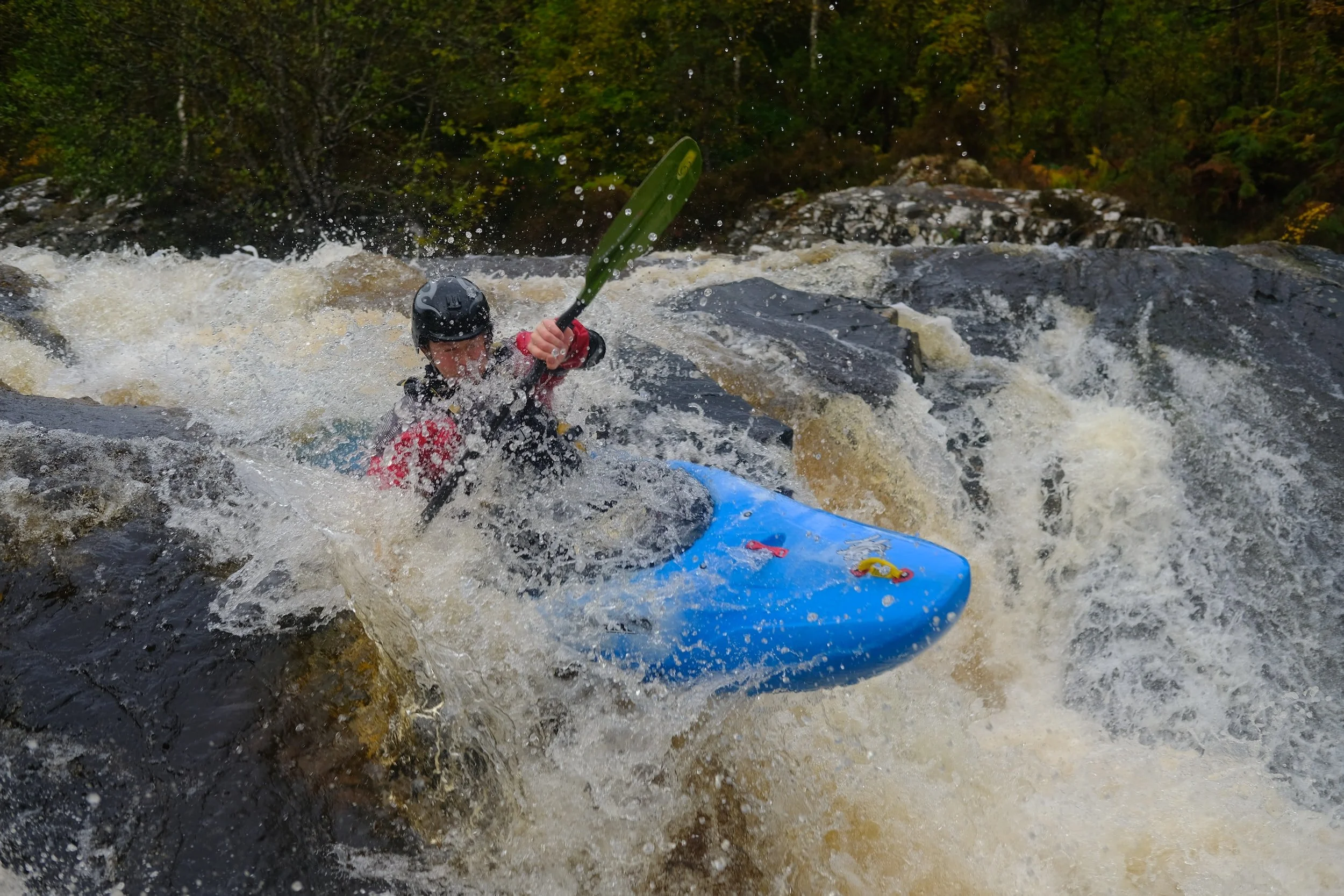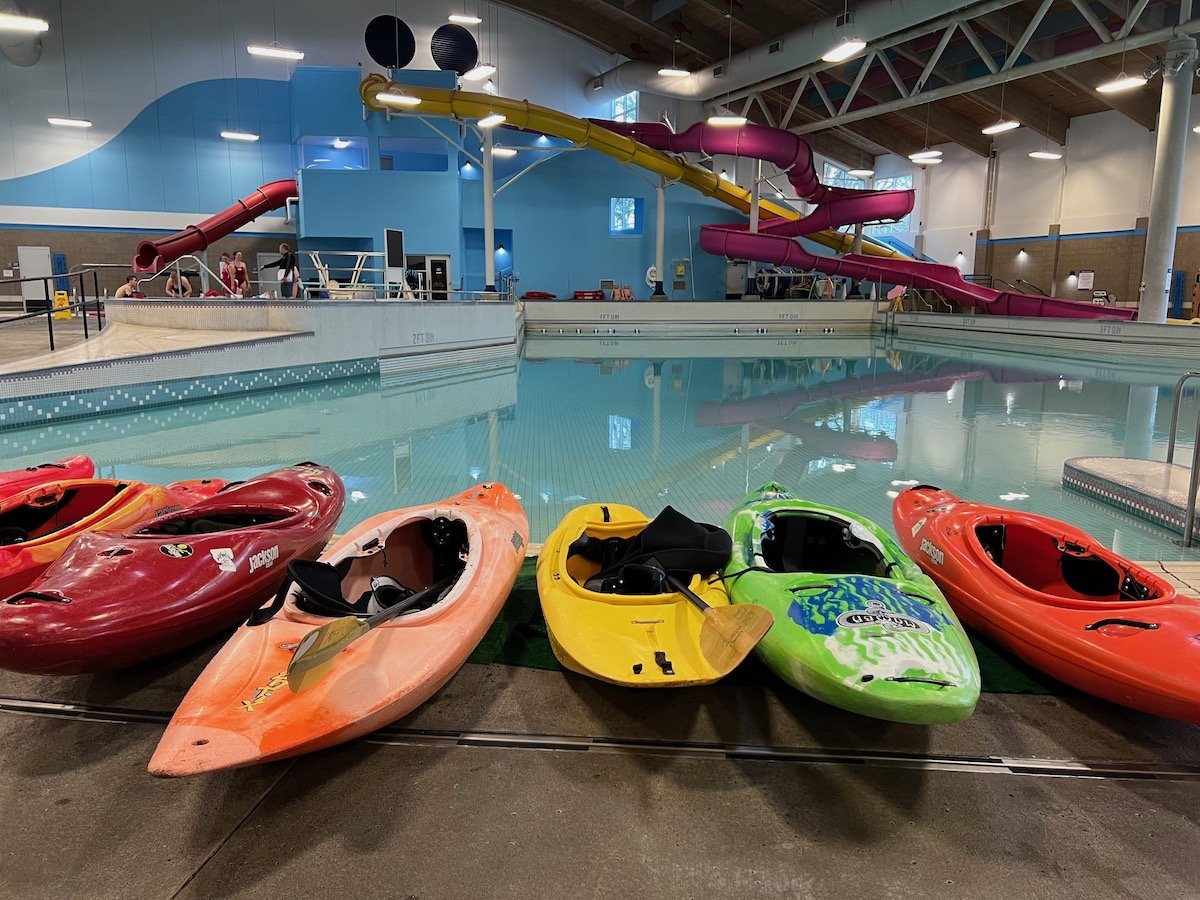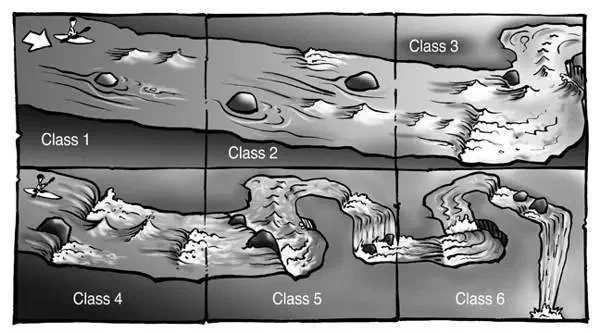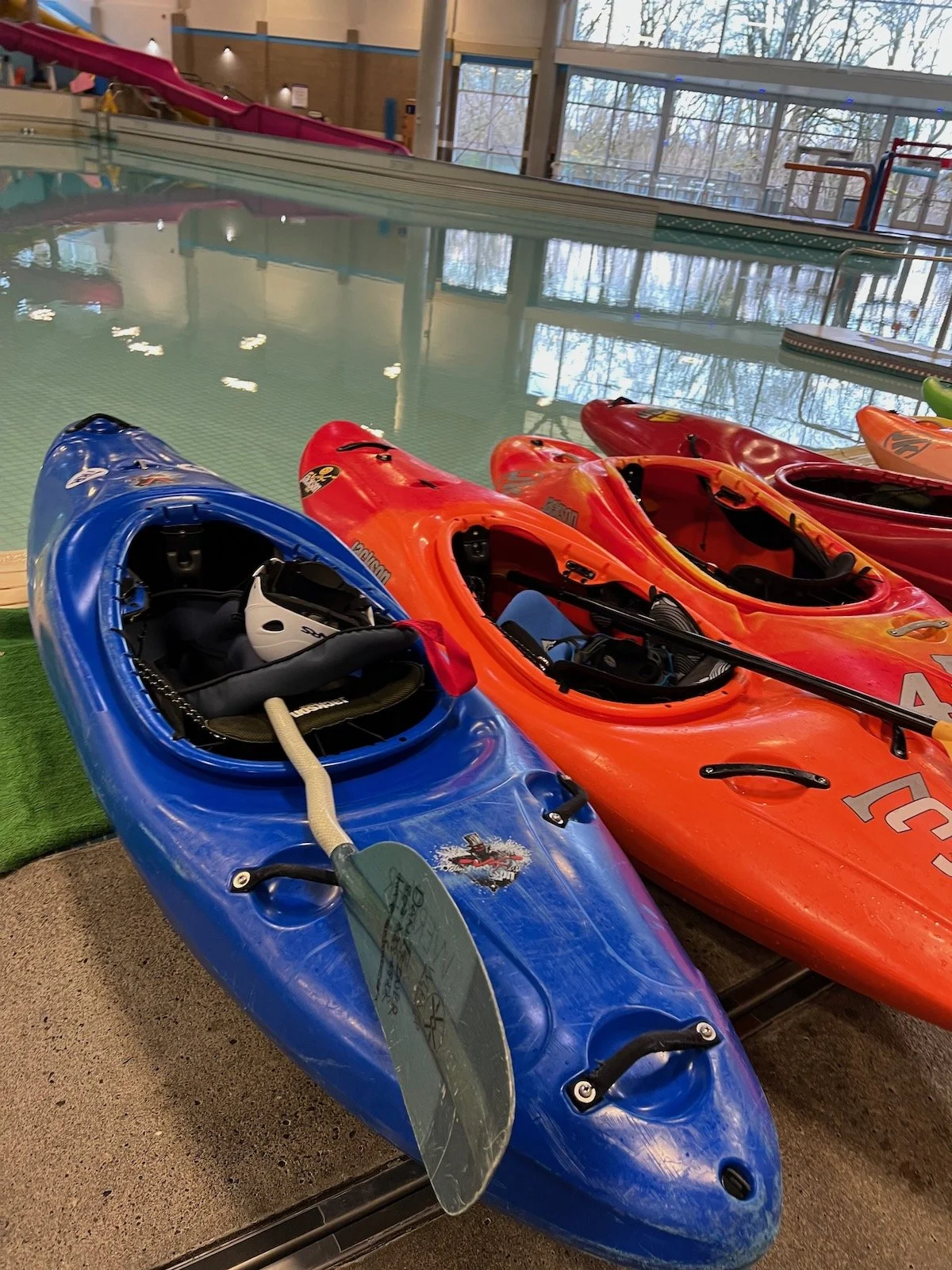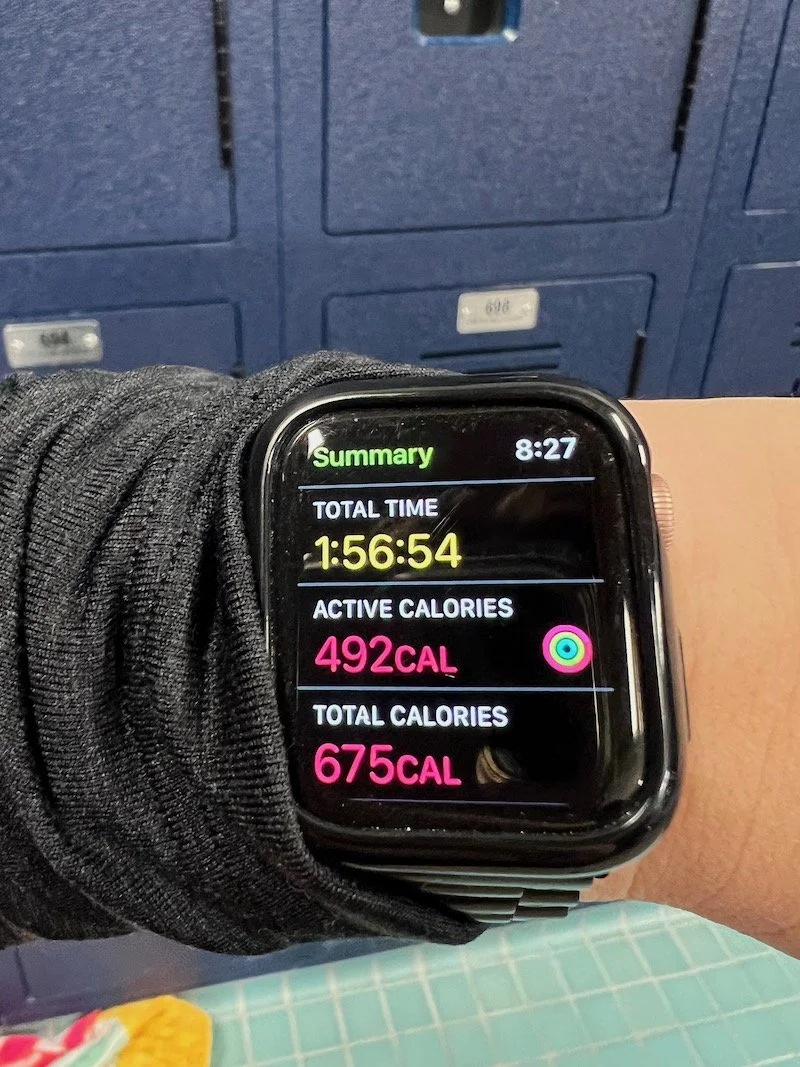Curious to try whitewater kayaking? Read this first
I’m a die-hard flatwater kayaker, but I have to confess that after binge-watching "The River Runner" documentary on Netflix, I was pretty captivated by the adrenaline-pumping world of whitewater kayaking. As someone who's spent hundreds of hours navigating flat water rivers and lakes (in the Class A and Class I classification) I started to wonder if I was ready to give a new thrilling challenge a go. After all, I’m in my early 40s and not getting any younger.
So I took the plunge (quite literally) and enrolled myself in an introduction to whitewater kayaking class and put my skills to the test in a controlled, warm-water pool environment.
Interested in getting into whitewater kayaking, but not sure if it’s right for you – or what a beginner whitewater pool class is really like?
Read on to find out, and learn why kayaking is gaining popularity in the U.S. and beyond…
In this article, we’ll review:
Basic definitions for whitewater kayaking,
FAQs about this challenging sport,
Advice to help you determine if you’re ready to try it out, and
Share what to expect if you take whitewater kayaking introduction pool class
This website may contain affiliate links meaning if you purchase through my link, I’ll receive a small commission at no cost to you.
About whitewater kayaking
Before we get into my whitewater pool intro experience, let’s define some important key terms.
What is whitewater kayaking?
Whitewater kayaking is an exciting sport where you navigate a kayak through rough, fast-moving river rapids. It's a thrilling and challenging adventure that combines skill, adrenaline, and a whole lot of fun.
What do whitewater classes mean?
Whitewater kayaking levels, also known as classes, indicate the difficulty of rapids based on factors like water flow, obstacles, and technicality. The classes for whitewater rapids, known as the International Scale of River Difficulty, were developed by the American Whitewater Association (now called American Whitewater). This organization is dedicated to the conservation and enjoyment of whitewater resources in the United States.
The whitewater classes scale provides a consistent way for paddlers to assess the difficulty of rapids and make informed decisions about which sections of a river are suitable (and safe!) for their skill level. These levels help us speak the same language.
An important thing to keep in mind: whitewater classifications can change due to varying water levels, weather conditions, and other factors, so it's crucial to stay informed and exercise caution while kayaking.
So, especially when you’re a beginner, always listen to a trained expert guide.
Let’s break down the classes for whitewater rapids:
Class I: Easy – Slow-moving water with small waves, few obstructions, and minimal maneuvering required. You might already be comfortable with this level, depending on your regular kayaking routes as a flat water kayaker who might flex your regular river routes. (Take an intro whitewater class anyways).
Class II: Moderate – Moderate rapids with clear channels, some maneuvering needed on medium-quick water, and basic paddling skills required. This is really where an introduction to whitewater kayaking class can come in handy – and it’s great to start in a pool as a confined safe environment for learning.
Class III: Intermediate – Moderately difficult rapids with irregular waves, stronger currents, and more complex maneuvering needed. Don’t jump into class III without proper training and skills. This is a big mistake that newbies make, and it’s potentially dangerous. There will be numerous irregular waves, and you’ll need solid experience under your belt to do these runs as safely as possible.
Class IV: Difficult – Intense, long rapids with powerful waves, whirlpools, and precise boat control required to navigate complex routes. Advanced preparation and visual inspection will be required as well. Basically, you need to absolutely need to konw what you’re doing before you take on this type of challenge. This is serious stuff that needs rescue preparations.
Class V: Expert/Extremely Difficult– Extremely challenging, violent rapids with long, powerful,and obstructed routes, demanding expert skills, and full mastery of boat control. There will be big drops as well. Helllllo, expert says it all. Is that you? You’re reading this post. Nope, sorry.
Class VI: Extreme – Unpredictable and dangerous rapids, often considered unnavigable, suitable only for expert paddlers with extensive experience in the most extreme and violent conditions. You know the Netflix documentary “The River Runner”? This is the type of rapids we’re talking about here. Extreme, dangerous, and for those absolute dedicated athletes at the top of their game. Think: Olympians facing the constant threat of death.
River classification images, source: Paddling.com
“I think one of the reasons that people think whitewater is so dangerous is because they see videos of people running huge Class V rapids or dropping down 100 ft waterfalls. While there is a community of elite kayakers who do those things on a regular basis, this is not the reality of most whitewater kayakers. I mostly paddle Class III rivers and have only just begun paddling a few Class IV rapids. ”
Is whitewater kayaking dangerous?
Whitewater kayaking carries inherent risks, but with proper training, safety gear, and experience, some hazards can be mitigated. Whitewater kayaking is demanding and potentially perilous, especially for novices. Beginners should be mindful of various hazards in rivers, such as low dams, undercut rocks, and debris like sweepers and strainers, and only paddle routes that match their skill level, preparation, and gear. Combining these risks with powerful currents and rocky terrain can create a dangerous situation. Additionally, paddlers must be cautious of weather-related factors, the risk of cold water exposure, hypothermia, and the possibility of drowning.
It's essential to learn and practice the fundamentals with expert ACA-certified instructors, know and follow your skill level, and paddle within your abilities to minimize danger while whitewater kayaking. It’s literally life or death.
Whitewater kayaking: How to know if you’re ready to give it a try
If you're a flat water kayaker thinking about getting into whitewater kayaking, here's a list of skills and preparation you should already have before trying out the sport:
Master basic kayaking skills: Be proficient in fundamental paddling techniques, maneuvering, and maintaining balance in various water conditions.
Develop your physical fitness: Whitewater kayaking is physically demanding (honestly, I’m really sore today), so work on enhancing your strength, flexibility, and cardio endurance through regular exercise and frequent paddle trips. Practice doing “paddling sprints” to get your heart rate up, and feel comfortably paddling for a couple of miles per session. I took this whitewater 101 pool class in the middle of my 12-week cardio health fitness challenge.
Gain experience on moving water: Try paddling in slow-to-medium moving rivers or streams to get a feel for handling currents, navigating obstacles, and hydrology basics. Take some guided trips and experiences to destinations new to you.
Invest in proper equipment: Ensure you have the right gear, such as a suitable kayak, paddle, helmet, personal flotation device (PFD), and protective clothing (like a dry suit), for your whitewater kayaking journey. This step is really when you’ve committed to the sport – when you take an introduction to whitewater kayaking class, your local paddle shop and instructors should be providing the gear for you (mine did). But be sure to ask.
Connect with experienced paddlers: Join a local paddling club or group to gain insights, support, and camaraderie while learning more about the sport. We highly recommend talking with ACA-trained expert instructors! This is why we gave our local paddle shop in the Portland, Oregon area, eNRG Kayaking, a call. They’re well known for their whitewater kayaking courses and we’d heard good things. So ask around, and get connected locally with whitewater experts.
By focusing on these key things as an avid flat water kayaker, you'll be better prepared to transition into whitewater kayaking and make the most of your introduction class.
The goal is to be safe and have fun!
Whitewater kayaking pool class for beginners
An introduction to whitewater kayaking class that starts in the pool is really ideal for beginners and anyone interested in developing new skills in a controlled, warm-water environment.
In a pool-based introductory class for beginner whitewater kayakers, you learn essential skills such as proper entry and exit techniques, basic paddling strokes, maintaining balance and stability, capsize recovery methods (like wet exits and self-rescues), and fundamental safety procedures. It’s also a great opportunity to strengthen your cardio and stay in shape in the off-season kayaking months, depending on where you live.
The follow whitewater kayaking skills, learned in the pool, provide a solid foundation for transitioning to real whitewater environments.
In my eNRG Kayaking whitewater kayaking pool class, we started out with kayaking housekeeping: a brief overview of the gear (whitewater kayaks are very different from calm water kayaks!), how to put on a spray skirt, fitted our helmets, ensured boat sizes were correct (you’ll provide your height and weight for this step), that sort of thing…
Also, you sign a waiver. Of course you do. This is a dangerous sport.
Then we moved onto a body warm-up. We climbed in our kayak boats (I used a Dagger Kayak) and paddled with just our hands around the pool for about 5-10 minutes to really warm up our arms, shoulders, abs. It helped us become more acquainted with this style of boat (it’s much tippier than a traditional stable kayak) and feel connected to the boat and water.
“The key thing is to be totally comfortable in navigating the kayak in any direction. That’s obviously important on the flat anyway, but when you get onto white water it’s absolutely essential to be quick and skillful at moving your kayak around, because there are always so many obstacles in white water that you have to avoid.”
After that, we moved on to learning and practicing whitewater kayaking skills. Even though these techniques felt a little strange and different, it was extremely helpful that I am a strong swimmer, comfortable on the water, and have a solid foundation of kayaking and paddling skill knowledge. My experience with recreational kayaking definitely helped me enjoy the pool class more, feel more confident when giving new things a try, and the resolve to keep trying when I was struggling with learning a new technique or concept (like rolling).
Let’s talk a little more about these fundamental skills you’ll learn and practice in a whitewater kayaking beginner pool class…
Basic paddling techniques: Mastering strokes like forward and backward strokes, sweep strokes, and draw strokes, as well as braces for maintaining balance.
Wet exits: Learning how to safely exit the kayak after capsizing, while staying calm and controlled – while wearing a kayak spray skirt.
Self-rescue and assisted rescue techniques: Practicing methods to right the kayak and re-enter it independently or with assistance from others.
How to roll: Although not always covered in introductory classes, some may teach the basics of this essential skill to recover from a capsize without exiting the kayak. There are different types of whitewater kayaking rolls, and the method you’ll learn will vary by instructor – but you’ll likely learn the C-to-C roll or Sweep Roll, if you’re ready.
Equipment familiarity: Understanding the proper use of whitewater-specific gear, such as helmets, personal flotation devices (PFDs), and appropriate clothing.
Safety awareness: Gaining knowledge of essential safety procedures, potential hazards, and effective communication signals.
These skills, learned in a controlled and safe environment like a swimming pool, really help lay the foundation for beginner whitewater kayakers to transition confidently into the real classroom – the river.
One extra fun note? After learning and practicing our new whitewater kayaking skills, they turned on the wave pool for the end of class. I felt like a little kid! For about ~20 minutes we put our skills to the test by learning how to ride waves, practicing our paddling strokes and turns, and more. This was really fun and it was a challenging cardio kayaking workout.
Next steps for learning after an introductory whitewater kayaking pool class
The next step for you – and me – as a whitewater beginner kayaker is to gain real-world experience by joining a guided beginner's trip or course on easy whitewater (Class I-II rapids). Another option, if you’re not feeling quite ready yet, is to take a second or third pool class to really develop your skills and help boost your knowledge and confidence before taking to the river. (I might do this as well – it was really fun, and a great way to spend a friday night focusing on my health and fitness too).
A whitewater beginner’s class on a river with expert instructors will help you apply the skills you've learned in the pool class, further develop your abilities, and build your confidence. Also, you may want to consider joining (or researching) a local paddling club or group to connect with experienced paddlers who can provide guidance and support as you continue your whitewater kayaking journey.
“Wear the right gear, take a class, and start out on Class I and II rapids. I am sure that if you give it a try, you will quickly realize the fun and beauty of the sport. Always wear your PFD and helmet, and respect the river.”
And as for me? I still absolutely love flat water kayaking (especially on slow-and-medium current rivers) as part of my healthy lifestyle, but whitewater kayaking was a fun, new thrill to try out. I’m glad I did it, and eNRG Kayaking and my instructors were very welcoming, knowledgeable, and made me feel safe. There’s a whitewater class coming up in early summer on the river, and I’m definitely interested in signing up. If I do, I’ll post an update below! And if you’re curious, 24 hours later, the sorest parts in my body? Triceps, hips, abs (side), and my legs feel like jelly. Get in a good stretch after your pool class – I’m glad I did, especially with hip opener stretches (thanks to whitewater kayaking rolling practice). Also, women, you don’t need to wear a bikini or traditional bathing suit to these classes. I know you’re wondering. I wore an REI long-sleeved rash guard and “amphibian” paddling shorts.
So tell us in the comments, flat water paddler – would you take a whitewater kayaking class? why or why not? Any interesting experiences to share with our community? Share below!
On my Apple iWatch, I used the “paddle” workout to track my beginner whitewater pool class. All in all, between the warm-up, lessons and practice, and then riding the wave pool (a major cardio fitness workout!) I burned 492 calories.
About eNRG Kayaking
eNRG Kayaking, located in Oregon City, Oregon, is a reputable kayaking business offering a range of services for outdoor enthusiasts. They provide kayak and paddleboard rentals, lessons, guided tours, and even team-building events. Led by experienced and knowledgeable staff, eNRG Kayaking focuses on promoting safety, skill development, and environmental stewardship. Whether you're a beginner or an experienced paddler, eNRG Kayaking offers a variety of programs and excursions, allowing you to explore the scenic waterways of Oregon in a fun and responsible manner.
About Flatwater Kayak Club
We set ourselves apart as the leading woman-owned, free, online kayaking resource, thanks to our conservation-forward content and meticulously human-reviewed paddling experiences.
By offering valuable, credible, and responsible information, Flatwater Kayak Club aims to help beginner and intermediate paddlers in the Pacific Northwest safely navigate waterways and contribute to a sustainable future for the global kayaking community.
You’re here, you’re in. The water awaits.
Top-viewed articles from Flatwater Kayak Club
The future of outdoor adventure and AI technology
10 Code of Conduct rules for kayakers (free infographic)

